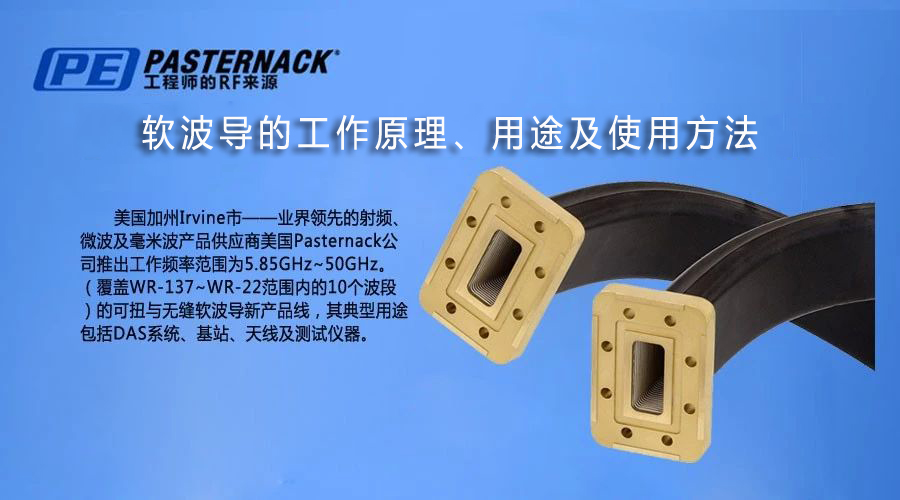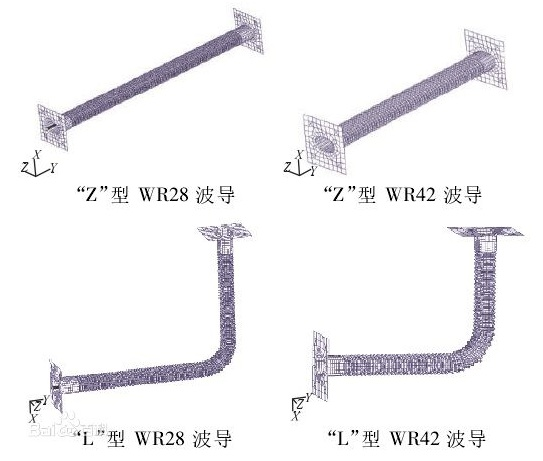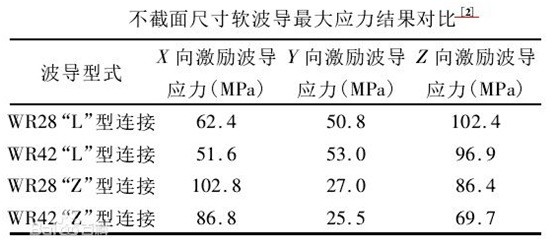Company News
Working principle, application and application method of soft waveguide
Working principle, application and application method of soft waveguide
The soft waveguide is a transmission line that acts as a buffer between the microwave device and the feeder. The inner wall of the soft waveguide has a corrugated structure, which has good flexibility and can withstand complex bending, stretching and compression, so it is widely used in the connection between microwave equipment and feeders. The electrical characteristics of soft waveguide mainly include frequency range, standing wave, attenuation, average power and pulse power. The physical and mechanical properties mainly include bending radius, repeated bending radius, ripple period, elasticity, inflation pressure, working temperature, etc.

Differences between soft waveguides and hard waveguides
Unlike hard waveguides, which are made of rigid structures and welded/brazed metal, soft waveguides are made of folded tightly interlocked metal segments. Some waveguides are also structurally strengthened by sealing and welding the joints within the interlocking metal segments. Each joint of these interlocking segments can be slightly bent. Therefore, under the same structure, the longer the length of the flexible waveguide, the greater the degree of bending. In addition, such interlocking segments are designed so that the waveguide channels formed within them are as narrow as possible.
Some waveguides can be bent in the wide direction, some can be bent in the narrow direction, and some can be bent in both directions. There is also a class of soft waveguides called "twisted" waveguides that can be twisted along the length. In addition, there are some waveguide devices that combine the above functions.
When using hard waveguides, the designer has to complete the design through existing available waveguide segments or commission custom hard waveguide components. In contrast, flexible waveguides sold in various standard lengths may allow bending or bending when fitted. For higher structural performance, some flexible waveguides are equipped with robust external sheathing, and these waveguide devices can be prefabricated to the desired shape at the time of manufacture.
The working principle of the flexible waveguide
The reason why the flexible waveguide can provide a certain amount of deformation is that the wall thickness of the flexible waveguide itself is small, about 0.1mm ~ 0.3mm, and the structure is similar to many disc springs connected in series, which has a good bending deformation ability. When the soft waveguide deforms, the bending stress will be generated inside the soft waveguide, so the bending ability of the soft waveguide and the bending times it can withstand are closely related to the materials used.
The flexible waveguide materials used in aerospace are mainly the following: brass, phosphor bronze (also known as tin bronze), beryllium bronze and so on. The most used in domestic aerospace is the brass soft waveguide, which is mainly used for the connection transition between the hard waveguides. Phosphobronze and beryllium bronze soft waveguides are also used, but because of their relatively high cost, the application is not as extensive as brass soft waveguides, and the strength of these two kinds of soft waveguides is higher than that of brass soft waveguides, so most of them are used in places where the mechanical environment is harsh, such as connecting waveguides as moving parts.
The use and application of soft waveguide
Soft waveguides can be used when the use of hard waveguides is too complicated, too expensive, or will lead to delays in the production schedule. Sometimes, in order to cope with various design changes, a redesign is required to replace the hard waveguide parts with readily available soft waveguides. In addition, soft waveguides are often used for prototype assembly for proof of concept before the final design is completed.
Because the soft waveguide structure is not as easy as the hard waveguide to transfer mechanical energy, some applications have a "hard" demand for soft waveguides. For example, when the relative position at a joint can vary greatly with environmental conditions such as temperature, humidity, or load, a flexible waveguide segment can be used to achieve a highly "loose" connection between two shiftable joints. In addition, some waveguides can also provide shock and vibration isolation, but this use may shorten the service life of the waveguide.
The use of flexible waveguide precautions
(1) In the case of meeting the requirements of electrical performance, try to choose a flexible waveguide with a larger cross-section size. FIG. 1 shows the stress analysis results of four flexible waveguides with the same length (110mm) and different section sizes under the same random vibration excitation when the flanges at both ends of the waveguide are constrained, as shown in FIG. 2. It can be seen from the analysis results that under the same load, the stress of the soft waveguide with larger section size is relatively small, so the soft waveguide with larger section size should be selected as far as possible on the basis of satisfying the electrical properties.
Figure 1

Figure 2

(2) When the soft waveguide is installed, the wide surface normal direction of the soft waveguide should be consistent with the direction where the maximum displacement difference exists. According to the performance parameters of the soft waveguide product, the allowable bending radius of the wide surface and the narrow surface of the soft waveguide are different, and the allowable bending radius of the wide surface is less than the allowable bending radius of the narrow surface, which means that the prestress is smaller when the same curvature is generated in the case of the wide surface bending.
(3) As far as possible, the area where the flexible waveguide is connected to the flange should be kept flat and straight to avoid the bending of the local flexible waveguide with large curvature at the location where the flange is connected during assembly. Because the bending radius allowed by the flexible waveguide is certain, the greater the curvature (i.e. the smaller the bending radius), the greater the stress of the waveguide, and the reduction of the local bending curvature can reduce the prestress generated during the assembly of the flexible waveguide.
(4) Select the appropriate length of the waveguide. The overlength of the soft waveguide will lead to the larger mass of the overhanging part of the waveguide. When the soft waveguide vibrates, it will be affected by the overhanging mass in its middle, and the root stress will increase as the overhanging mass increases. However, if the soft waveguide is too short, it means that the part of the soft waveguide used to adapt to the deformation is short, which is easy to cause the local curvature of the connection position between the soft waveguide and the flange is too large, resulting in the prestress of the connection root of the soft waveguide, and even the fracture when stimulated.
Not suitable for use with soft waveguides
Compared with hard waveguide structures, soft waveguides are generally less rigid and physically robust. When using a soft waveguide with further mechanical support from a hard waveguide, any large mechanical strain or load can cause damage to the soft waveguide or decrease in electrical performance. In addition, excessive vibration and shock can also cause mechanical and electrical failures of flexible waveguides. Because bending can cause wear, sheath damage or premature failure at the joints of the waveguide, the design of the waveguide is generally not suitable for repeated bending. Compared with some hard waveguides, the electrical properties of soft waveguides are poor because of the thin metal wall, the contact resistance between the sections and the less ideal surface of the internal waveguides. It can be seen that compared with hard waveguides, soft waveguides generally have slightly worse transmission characteristics and weaker power processing capability. In addition, because soft waveguides use jacket materials and connecting solders with different temperature performance ranges than rigid metals as key components, their operating temperature ranges are also different from hard waveguides.
If the flexible waveguide is not covered or otherwise sealed, any small gap can cause moisture and other environmental contaminants to enter its structure. Although the amount of moisture in the waveguide can be reduced by purging and using desiccant, these factors will affect the performance of the waveguide over time in environments with high humidity or high pollution.
With 40 years of experience in the test and measurement industry and a professional sales, technical and service team, Jiazhou Technology is excellent in many fields, including: general microwave/RF testing, wireless communication testing, data acquisition recording and analysis, vibration and noise analysis, electromagnetic compatibility testing, automotive safety testing, precision programmable measurement power supplies, microwave/RF components, sensors, etc.
Working principle, application and application method of soft waveguide
- Previous: No Information!
- Next: What causes the aviation plug to have a metal coating

